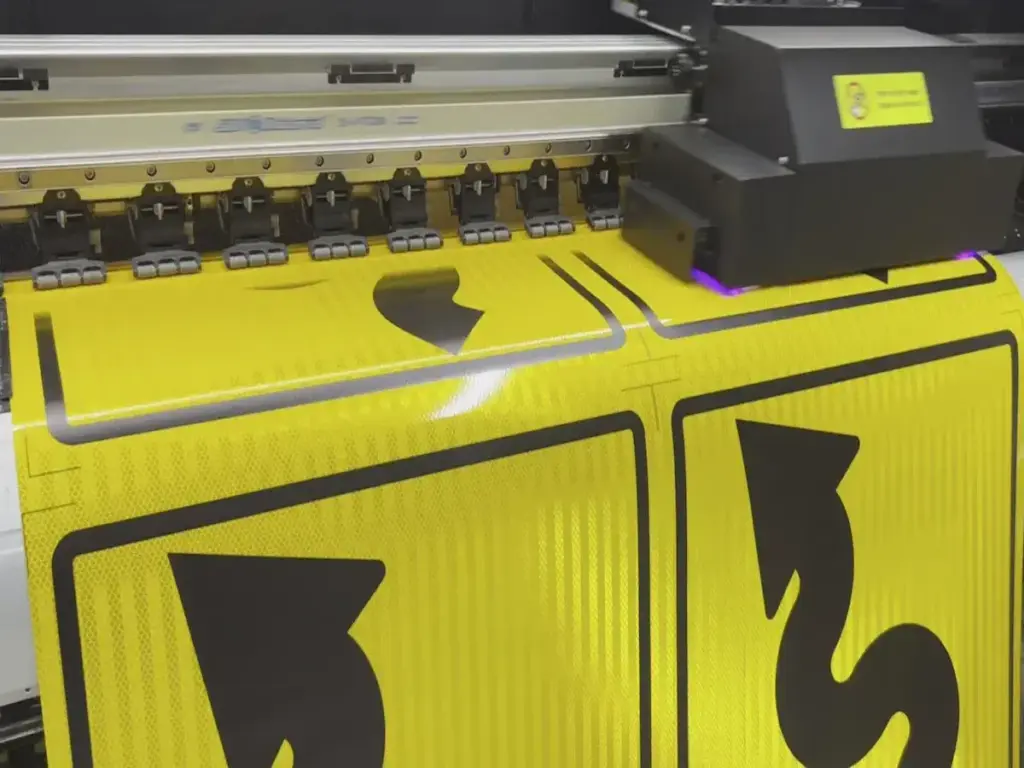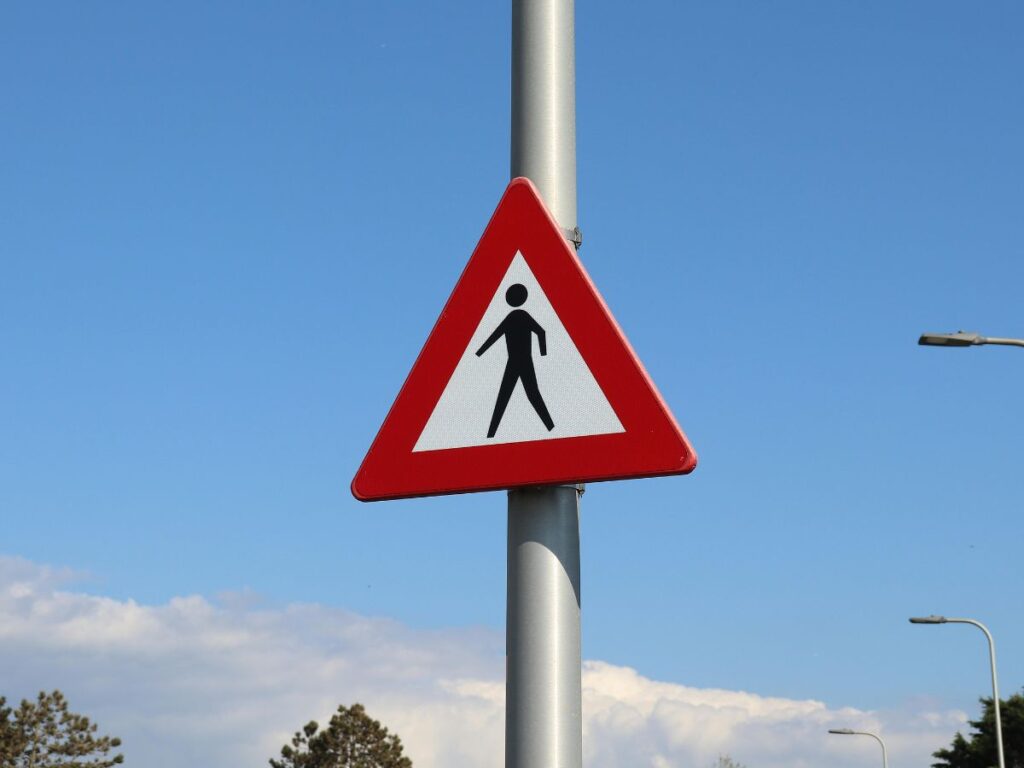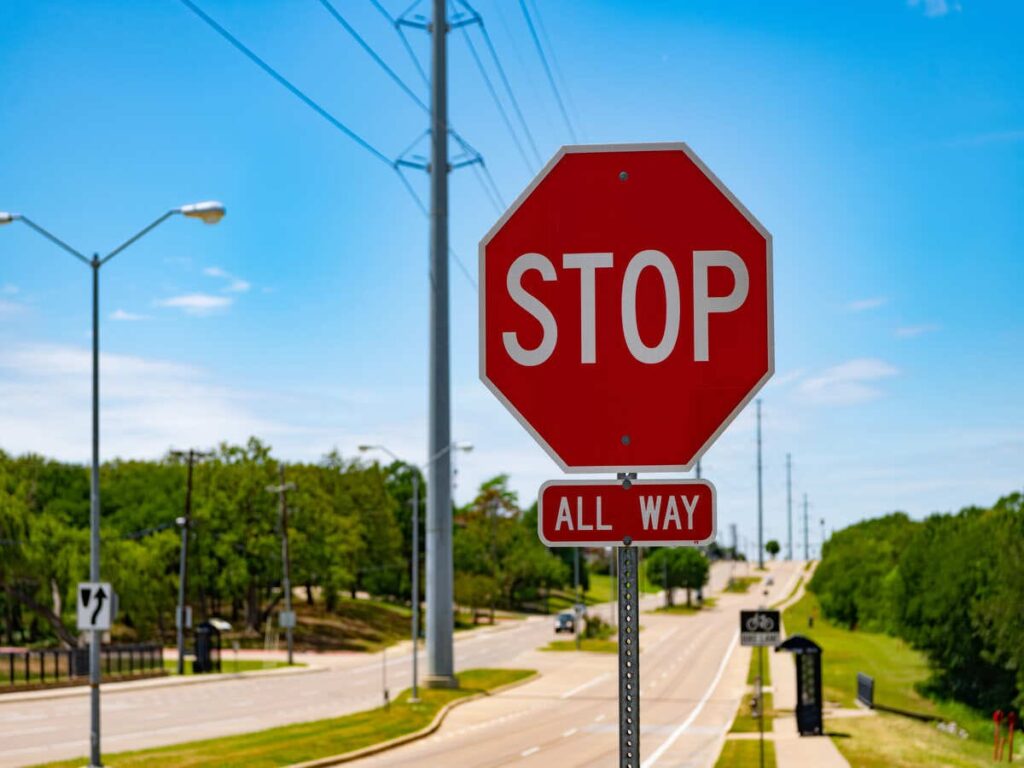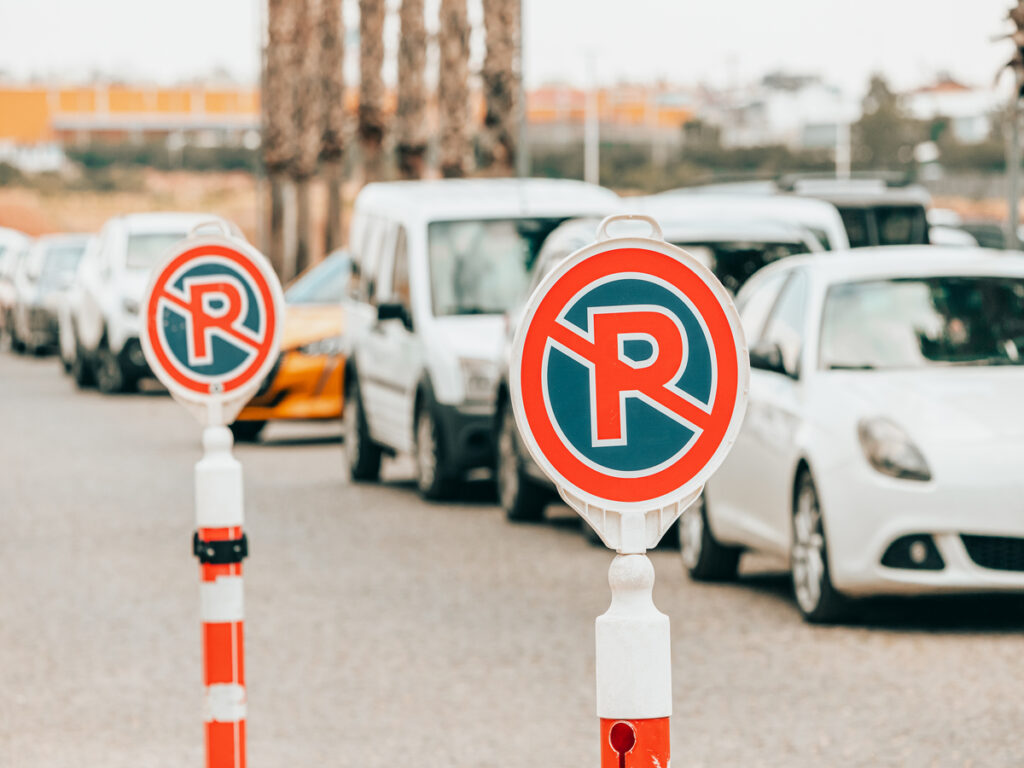
In 1940, Charles D. Scanlon, a painter, revolutionized road safety by inventing the reflective safety cones. Before this, wooden barricades were common, but they lacked visibility and durability. Scanlon’s innovative design used rubber, creating a lightweight, stackable, and highly visible cone. This new tool effectively diverted automobiles away from fresh paint, enhancing road safety. The traffic cone’s simple yet effective design quickly became an essential part of traffic management, ensuring both worker and driver safety on the roads.
Background and Historical Context
Who invented the traffic cone is a key point in understanding the origin of the traffic safety cone. Delving into the societal and historical context of its invention, we find that the early 20th century marked a period of rapid industrialization and urbanization, which brought about significant changes in transportation and infrastructure.
Societal Needs
During this era, roads became busier as automobiles gained popularity. You can imagine the chaos on streets without proper traffic management tools. The need for effective road safety measures became apparent. Wooden barricades and tripods were common, but they often failed to provide the necessary visibility and durability. This inadequacy highlighted the urgent need for a more reliable solution to guide and protect both drivers and road workers.
Impact of Industrialization
The Industrial Revolution played a pivotal role in shaping the landscape of transportation. As factories produced more vehicles, the volume of traffic increased dramatically. This surge in traffic necessitated better control measures to ensure safety. The introduction of the traffic safety cone in the 1940s by Charles D. Scanlon, who invented the traffic cone, addressed these challenges. His invention replaced the less effective wooden structures with rubber cones, which were more visible and durable. This innovation not only improved road safety but also facilitated smoother traffic flow.
Early Alternatives and Attempts
Before the advent of the traffic safety cone, various methods were employed to manage traffic. Wooden stakes and sandbags were among the early attempts to guide vehicles. However, these tools had limitations in terms of visibility and ease of use. The transition from wooden tripods to rubber cones marked a significant advancement in traffic management. By 1958, traffic cones had become a standard tool on British roads, further solidifying their importance in road safety.
The journey from rudimentary traffic control methods to the modern traffic safety cone illustrates the evolution of road safety measures. This transformation was driven by the growing demands of industrialization and the need for effective solutions to manage increasing traffic volumes.
The Inventor and the Story of the Invention
Inventor’s Background
You might find it fascinating that Charles D. Scanlon, who invented the traffic cone, worked as a street painter in Los Angeles. His job involved painting road markings, a task that required precision and safety. Scanlon’s daily experiences on the bustling streets of Los Angeles exposed him to the challenges of maintaining road safety while ensuring that fresh paint remained undisturbed. This environment played a crucial role in shaping his innovative thinking.
Inspiration for the Design
Imagine working on a busy street, trying to keep cars from driving over wet paint. This was the challenge Scanlon faced. He recognized the need for a device that could effectively warn drivers and protect his crew. Inspired by this necessity, Scanlon, who invented the traffic cone, designed a hollow, ballasted conical marker. This design not only served as a warning but also provided stability against wind and traffic. The simplicity and effectiveness of the cone shape made it an ideal solution for road safety.
Prototypes and Early Challenges
Creating the first traffic cone wasn’t without its hurdles. Scanlon, who invented the traffic cone, experimented with various materials before settling on rubber. Rubber offered durability and flexibility, essential qualities for withstanding the rigors of road use. Despite these advantages, early prototypes faced challenges. Ensuring the traffic safety cones remained upright in adverse weather conditions required careful consideration of weight distribution. However, Scanlon’s persistence paid off. In 1943, he secured U.S. Patent 2,333,273 for his innovative design. By 1947, the mass production of traffic cones began, marking a significant milestone in road safety.
Modern Uses of Traffic Safety Cones

Applications in Construction, Events, and Public Safety
You encounter reflective safety cones in various environments, each serving a crucial role. In construction zones, these orange cones guide vehicles and pedestrians safely around work areas. They create a visible barrier that alerts drivers to slow down and navigate carefully. At public events, orange cones help manage crowds and direct foot traffic, ensuring orderly movement and preventing accidents. You might also see them in parking lots, where they designate specific areas for parking or restrict access to certain zones.
In public safety, orange cones play a vital role. Emergency responders use them to secure accident scenes, directing traffic away from hazards. Orange cones also mark safe pathways during evacuations or emergencies. The versatility of traffic orange cones makes them indispensable in maintaining order and safety in diverse situations.
Technological Integration and Future Prospects
The evolution of reflective safety cones continues with technological advancements. Modern cones often feature reflective strips, enhancing visibility at night or in low-light conditions. Some cones incorporate lights or sensors, providing additional safety measures. These features ensure that you can see the orange cones from a distance, reducing the risk of accidents. Many wonder: Who was behind the invention of the traffic cone? It was Charles D. Scanlon, whose innovation laid the foundation for these life-saving devices.”
Looking to the future, traffic orange cones may integrate even more advanced technologies. Digital displays on reflective safety cones could provide real-time information to drivers, such as detour routes or traffic updates. In smart cities, orange cones might communicate with autonomous vehicles, guiding them safely through construction zones or around obstacles. These innovations promise to enhance the functionality and effectiveness of traffic cones, making roads safer for everyone.
Technology and Materials

Choice of Materials
When you think about reflective safety cones, you might not realize the careful selection of materials that go into their creation. Modern traffic safety cones primarily use flexible thermoplastic materials like polyvinyl chloride (PVC) or rubber. These materials offer several advantages. They provide durability and weather resistance, ensuring that the safety cones can withstand harsh environmental conditions. Additionally, these materials allow the cones to revert to their original shape after being compressed or run over, which is crucial for maintaining their functionality.
Reflective materials or bands often enhance the visibility of traffic cones, especially in low-light conditions. This feature ensures that you can see them from a distance, reducing the risk of accidents. The choice of these materials guarantees the traffic safety cones’ longevity and effectiveness in various settings.
Manufacturing Process
The manufacturing process of reflective safety cones involves several steps to ensure they meet safety standards. Initially, manufacturers mold the thermoplastic materials into the iconic cone shape. This process requires precision to achieve the broad base and pointed tip that provides stability and visibility. After molding, the traffic safety cones undergo a cooling process to solidify their shape. Many are curious about the origins of this essential tool — who is responsible for inventing the traffic cone? The answer is Charles D. Scanlon, who introduced the design in 1940.
Next, manufacturers add reflective strips or bands to the reflective safety cones. These elements are crucial for enhancing visibility, especially at night or in poor weather conditions. Some cones also feature additional components like handles for easy transport or bases that can be filled with sand or water for added stability. These features make the cones versatile and adaptable to different environments.
Color and Shape Design
The design of reflective safety cones is both simple and effective. The conical shape, with a broad base tapering to a pointed tip, ensures stability and visibility. This design has remained largely unchanged since its inception due to its effectiveness in directing traffic and maintaining safety.
Orange is the standard color for traffic cones, chosen for its high visibility and recognizability. This color stands out against most backgrounds, making it easy for you to spot the orange cones from a distance. In addition to orange, cones often feature reflective white bands to further promote safety. These design elements ensure that traffic orange cones send a visible, universally-understood message to motorists and pedestrians alike.
In recent years, some traffic safety cones have incorporated advanced features like built-in sensors or digital displays. These innovations promise to enhance the functionality of traffic cones, making them even more effective in managing traffic and ensuring road safety.
Functions and Impact of Traffic Cones
Multi-functionality
Traffic safety cones serve a variety of purposes beyond their primary role in road safety. You might have seen them in construction zones, where they guide vehicles and pedestrians safely around work areas. They create a visible barrier that alerts drivers to slow down and navigate carefully. At public events, cones help manage crowds and direct foot traffic, ensuring orderly movement and preventing accidents. In parking lots, they designate specific areas for parking or restrict access to certain zones.
Interestingly, traffic safety cones also find unconventional uses. For instance, children often use them in imaginative play, setting up pretend construction zones or roadblocks for toy cars. This playful interaction highlights the cone’s versatility and its ability to engage people of all ages. Additionally, some creative individuals have even found ways to make music from cones, showcasing their adaptability in unexpected ways.
Contribution to Traffic Safety
The introduction of the traffic safety cone marked a significant advancement in road safety. By providing a clear and visible warning to drivers, cones help prevent accidents and protect both road workers and motorists. Their bright color and reflective bands ensure that you can see them from a distance, reducing the risk of collisions. In emergency situations, cones play a crucial role in directing traffic away from hazards and marking safe pathways.
Statistics and case studies consistently demonstrate the positive impact of traffic cones on road safety. They contribute to a reduction in accidents and enhance the overall efficiency of traffic management. By guiding vehicles and pedestrians safely through construction zones and other potentially hazardous areas, traffic safety cone helps maintain order and prevent chaos on the roads.
Cultural Significance
Beyond their practical applications, traffic cones have become a cultural symbol of road safety and caution. Their iconic shape and color make them instantly recognizable, and they often appear in art, media, and advertising. This cultural significance extends to their use in various creative and humorous contexts, such as in street performances or as props in films and television shows.
Traffic cones also evoke nostalgia for many people, reminding them of childhood memories and playful interactions. As one person recalled, “When I see a traffic cone, I think of the times my friends and I would use them to set up pretend construction zones or roadblocks for our toy cars.” This anecdote illustrates how traffic cones have become ingrained in our collective consciousness, representing both safety and creativity.
Patent and Commercialization
Patent Application Process
When you think about the journey of traffic safety cones from concept to widespread use, the patent application process plays a crucial role. Charles D. Scanlon, the inventor, recognized the importance of protecting his innovative design. In 1943, he secured U.S. Patent 2,333,273 for his traffic safety cone. This patent described the cone’s unique features, such as its hollow, ballasted design that provided stability and visibility. By obtaining a patent, Scanlon ensured that his invention would be recognized and protected, allowing it to reach a broader market.
The patent process involves several steps. First, you must submit a detailed description of the invention, highlighting its novel aspects and potential applications. The patent office then reviews the application to ensure it meets all legal requirements. Once approved, the patent grants the inventor exclusive rights to manufacture and sell the product for a specified period. This protection encourages innovation by allowing inventors to benefit financially from their creations.
Early Market Introduction
After securing the patent, the next step involves introducing the traffic safety cone to the market. You might wonder how a simple cone became an essential tool in traffic management. The answer lies in its practicality and effectiveness. In the late 1940s, manufacturers began mass-producing traffic cones, making them widely available for road safety applications. Their lightweight, stackable design made them easy to transport and deploy, quickly gaining popularity among construction crews and road workers.
The early market introduction focused on demonstrating the cone’s benefits over traditional wooden barricades. By showcasing its durability, visibility, and ease of use, manufacturers convinced road authorities and construction companies to adopt this new tool. As more organizations recognized the advantages of traffic cones, their demand increased, leading to further innovations and improvements in design and materials.
Competitors and Imitations
As with any successful invention, traffic cones soon faced competition and imitations. Other inventors and companies sought to improve upon Scanlon’s original design, leading to the development of various traffic cone systems. For example, the Traffic Cone System by Angelo Lamar Flamingo introduced new features and materials to enhance the cone’s functionality.
Competitors often focused on incorporating advanced materials or adding reflective elements to improve visibility. Some designs even included inflatable components, allowing for easy storage and transport. These innovations contributed to the evolution of traffic cones, ensuring they remained effective tools for road safety.
Despite the competition, Scanlon’s original design laid the foundation for modern traffic cones. Its simplicity and effectiveness have stood the test of time, making it a staple in traffic management worldwide. As you encounter traffic cones on the road, remember the journey they took from a simple idea to an indispensable safety device.
Hypothetical Scenarios Without Traffic Cones
Imagine a world without traffic cones. You might wonder how roads and construction sites would manage safety and order. Traffic cones play a crucial role in guiding vehicles and pedestrians, ensuring safety in various environments. Without them, alternative tools would need to fill this gap.
Alternative Tools
In the absence of traffic cones, you would likely see other methods employed to manage traffic and ensure safety. Some possible alternatives include:
- Wooden Barricades: Before traffic cones, wooden barricades were common. They provided some level of guidance but lacked the visibility and flexibility of modern cones. You might find these barricades cumbersome and less effective in directing traffic.
- Sandbags: Another option could be sandbags. They offer stability and can mark boundaries. However, they don’t provide the same level of visibility as bright orange cones. You might struggle to notice them from a distance, increasing the risk of accidents.
- Flags or Signs: Flags or signs could serve as visual cues for drivers and pedestrians. While they can convey messages, they lack the physical presence of cones that create clear pathways and barriers.
- Electronic Signals: In some scenarios, electronic signals or lights might replace cones. These tools can effectively guide traffic but require power sources and maintenance. You might find them more suitable for permanent installations rather than temporary setups.
Impact on Modern Traffic
Without traffic cones, modern traffic management would face significant challenges. You would likely encounter increased confusion and accidents on the roads. Here’s how the absence of cones could impact traffic:
- Reduced Visibility: Traffic cones are designed to be highly visible, even in low-light conditions. Their bright colors and reflective bands catch your attention, reducing the chances of accidents. Without them, alternative tools might not provide the same level of visibility, leading to more collisions and mishaps.
- Increased Chaos: Traffic cones help control and guide the flow of people and vehicles. They create order in construction zones, events, and emergency situations. Without cones, you might experience increased chaos and disorder, making it difficult to navigate safely.
- Safety Concerns: Proper cone placement ensures that construction sites meet safety standards. Without cones, maintaining a safe environment for workers and the public becomes challenging. You might see more accidents and injuries in areas where safety is paramount.
- Inefficient Traffic Management: Traffic cones play a vital role in managing traffic patterns and ensuring smooth flow. Without them, you might encounter longer delays and congestion, especially in busy areas or during peak hours.
Reflective safety cones have transformed from simple markers to essential tools in traffic management. You see them everywhere, guiding vehicles and ensuring safety. Their bright colors and distinct shapes make them easy to notice, reducing accidents. The evolution of these cones reflects society’s commitment to road safety. As technology advances, cones continue to adapt, integrating new features for enhanced visibility and durability. This ongoing innovation ensures that traffic cones remain relevant and effective in modern society, playing a crucial role in keeping roads safe for everyone.



















